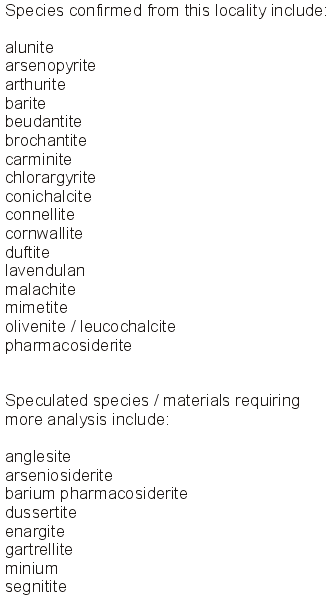

|
|
|
Alunite occurs commonly in sections of altered tuff in several of the modern trench cuts surrounding the main mining area and the southeastern prospect. The mineral occurs as euhedral, pseudohexagonal plates of a light pink color.
|
|
|
|
Arsenopyrite and also pseudomorphs of limonite/goethite after arsenopyrite, were found at both the main mining location and the southeastern prospect. This mineral appears to be the primary arsenic bearing sulfide in the system. The mineral occurs as short prismatic, or pseudooctahedral crystals, often with characteristic striae. The color in unaltered material is steel gray.
|
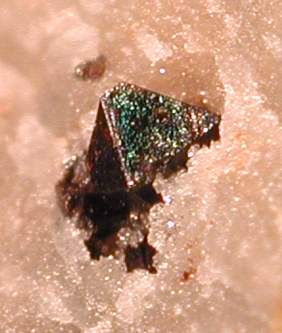
|
|
|
A handful of good specimens of arthurite were recovered from the two collecting sites, with the majority of the specimens having been recovered from dump material at the southeastern prospect. This species is rare in occurrence and it is necessary to examine the porous matrix very carefully to find arthurite clusters. Success in locating this species clearly illustrates the preferred collecting method at Rhyolite Pass; i.e., it is best not to try spotting the minerals in the field. Likely looking material should be reduced to manageable size in the field and then be transported home for further examination. An alternating routine of examination under the microscope and reduction will yield the best results. Arthurite occurs as isolated rosettes of narrow bladed crystals, of a characteristic apple green color. The specimens are very similar in appearance to Majuba Hill material, only smaller in size. Many smears and blebs of apple green material are seen throughout the mineralized host rock which may well be arthurite; however, detailed analysis would be necessary to discriminate these samples. |
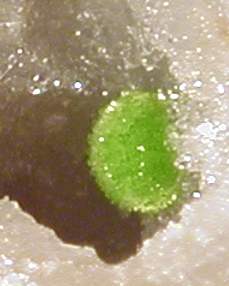
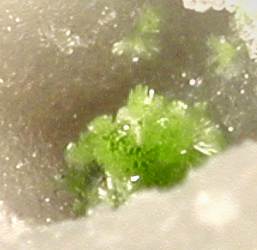
|
|
|
Barite occurs commonly in both of the collecting areas as euhedral crystals up to several millimeters in size. The crystals occur in a number of habits with the tabular habit predominating. The color of the crystals is typically white or colorless, but some yellow crystals were observed. Crystals with selective overgrowths on some of the faces are quite common. Also, many of the pseudomorphs that have formed in the vein material, have formed at the expense of barite.
|
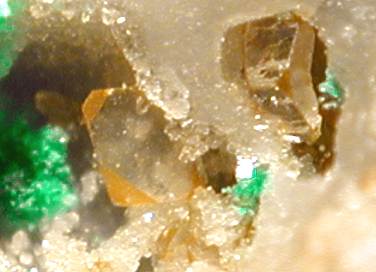
|
|
|
This species is a common constituent of the arsenic bearing vein material from both collecting sites. Beudantite occurs as microcrystalline druses, composed of extremely small, rhombohedral to pseudocubic crystals. Specimen coloration shows considerable variation, ranging from olive green, to yellow, to brown. SEM-EDS analyses were performed on samples of this material by three separate individuals: Paul Adams, Alex Falster (University of New Orleans), and Bill Wise (UC Santa Barbara). Most samples indicated the presence of small amounts of Cu, indicating that perhaps some of this material was the species gartrellite. Paul Adams also performed XRD analysis on selected samples of this material. The data from these analyses indicated a clear match for beudantite. The presence of copper is anomalous, as it would not normally substitute for iron.
|
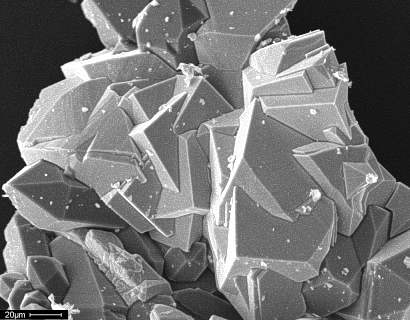
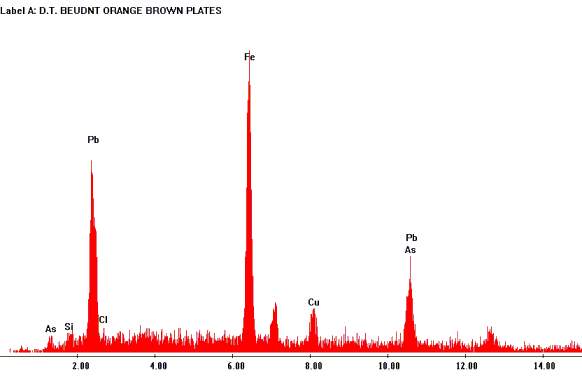
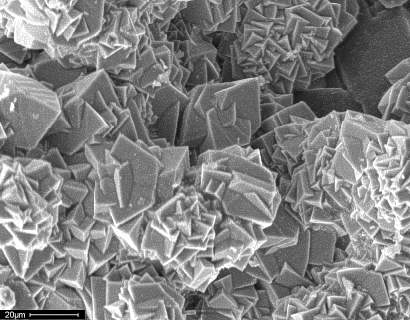
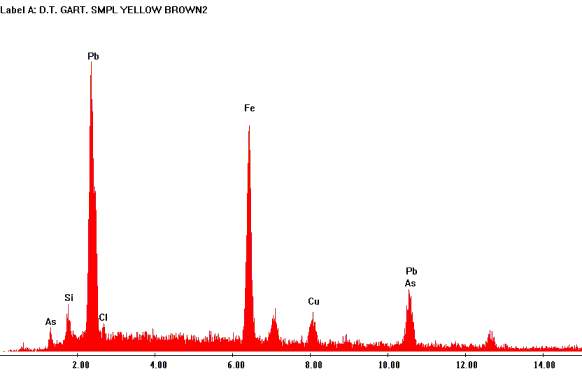
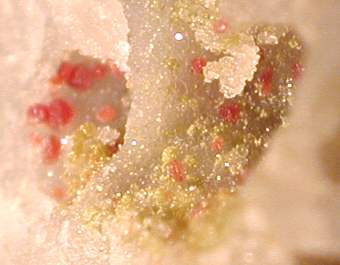
|
|
|
Brochantite occurs rather commonly in material from the main mining area and the southeastern prospect. Although this species tends to form euhedral crystals, it is difficult to obtain attractive specimens, due to the small size of the cavities in the matrix and the difficulty experienced in trying to split the matrix in a controlled manner. The brochantite crystals typically form in radiating, acicular clusters of prismatic crystals. Less commonly, brochantite has been noted in a bladed, tabular habit. It has been observed that many of the pseudomorphs that occur in bladed, rosette-like clusters, have a remnant core of brochantite. The crystals have the typical blue-green coloration.
|
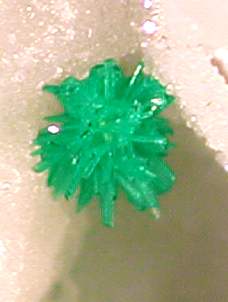
|
|
|
Bright red to reddish brown carminite occurs at both the main mining area and the southeastern prospect. The species is most plentiful in iron-rich, limonite stained vein material. The species occurs as tufted, spherical aggregates, or tight bundles of acicular crystals. Carminite clusters are often associated with drusy cavity linings of green-brown beudantite. As with the beudantite samples that were analyzed, carminite spectral analyses also revealed the anomalous presence of copper.
|
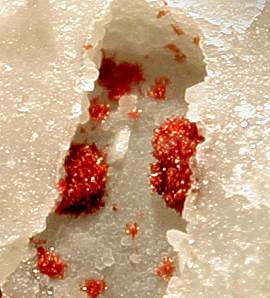
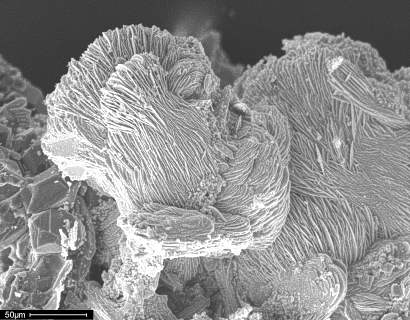
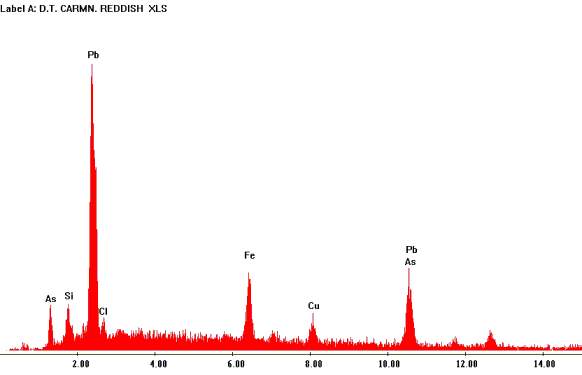
|
|
|
Specimens of chlorargyrite have been reported from the main mining area. (J. Marty, personal communication, 2001).
|
|
|
|
This species is a minor constituent of the arsenic bearing vein material. Conichalcite occurs as grass green, botryoidal crusts and individual spheres, lining cavities in the matrix. Specimens are semi-translucent, with a resinous luster.
|
|
|
|
This species occurs with extreme rarity in the vein material from both of the collecting locations. The typical mode of occurrence is as isolated hair-like fibers perched within cavities in the matrix. At first, the identity of this species could only be speculated upon due to the limited amount of material that was collected and the fragility of the specimens. Fortunately, a single, well-formed specimen was located (R.W. Thomssen collection) which has the habit and characteristics representative of connellite. This specimen is composed of spherulitc aggregates of slender acicular crystals. The color of the crystals is an intense azure blue. The crystals tend to be transparent, with a vitreous luster.
|
|
|
|
Cornwallite forms botryoidal crusts lining cavities in the matrix. The color is dark green and the material has a resinous luster.
|
Copyright 2011 by the Northern California Mineralogical
Association
All rights reserved.